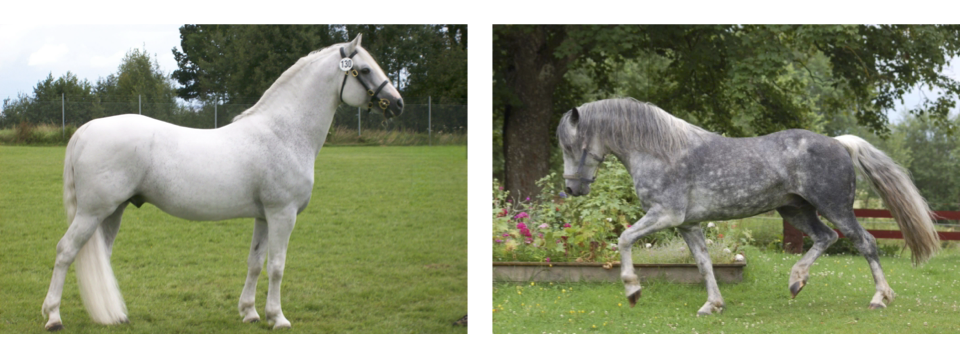Texas A&M Researchers Discover Gene Variants That Determine Speed Of Graying In Horses
Story by Courtney Price, VMBS Marketing & Communications

Scientists from the Texas A&M College of Veterinary Medicine and Biomedical Sciences (VMBS) and Uppsala University in Sweden now understand why some gray horses turn completely white as they age, while others remain an eye-catching “dappled” gray color.
As published in the journal Nature Communications, the deciding factor is the number of copies of a small DNA sequence within the gray coat gene carried by each horse; while “slow-graying” horses have a gene variant with two copies of the duplication, “fast-graying” horses — those that will eventually become white — have a gene variant with three copies.
“There are horses that are born white because they carry a gene variant that is causing white coat color, but the great majority of white horses don’t have this gene variant,” said Dr. Leif Andersson, a professor in the VMBS’ Department of Veterinary Integrative Biosciences and at Uppsala University. “Instead, gray horses are born with normal coat pigment — like black or brown — that gradually lightens as they age and eventually becomes gray or white.”
Whether a horse has two or three copies of the duplicated sequence in the gray gene determines how fast a horse turns gray and if they end up as a gray or white horse.

“Some horses, the ones that will eventually become white, begin to grow gray eyelashes and hairs at the base of the tail within the first week after birth,” Andersson said. “A horse that is ‘slow graying’ will typically not show signs of gray until it is 5 to 7 years old.”
While having a gray or white coat color doesn’t appear to influence a horse’s athletic performance or overall health, it does make a horse more prone to developing melanomas — a type of skin cancer that has a well-established connection with the gray gene in horses.
“Horses that are ‘fast graying’ are more likely to develop melanomas, whereas we don’t see an elevated risk in horses that are ‘slow graying’,” Andersson said.
The researchers hope that this new understanding of gray coat color and equine genetics will open new doors for further research about how to prevent and treat melanomas in gray horses.
###
For more information about the Texas A&M College of Veterinary Medicine & Biomedical Sciences, please visit our website at vetmed.tamu.edu or join us on Facebook, Instagram, and Twitter.
Contact Information: Jennifer Gauntt, Director of VMBS Communications, Texas A&M College of Veterinary Medicine & Biomedical Sciences, jgauntt@cvm.tamu.edu, 979-862-4216


